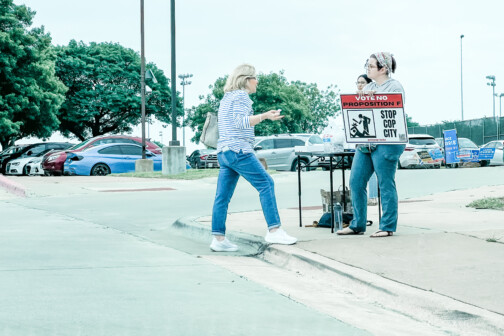When Marvel Comics introduced Wolverine in 1975’s Giant-Sized X-Men #1, he was one of a number of new characters intended to both revive and update the series. The superhero struck a different tone. He was mean, suspicious, and temperamental. The Musketeer mindset of Professor Xavier’s team of misfit mutants didn’t mesh with the character’s rogue style. In many ways, Wolverine’s introduction was an echo of a broader shift in post-1960s American cultural, of the cynicism and skepticism born of a decade of political upheaval, social violence, war, and assassinations. The jump from Spider Man to Wolverine can be seen alongside the shift from John Wayne to Clint Eastwood, from Shane to The Wild Bunch, from The Lone Ranger to Dirty Harry.
For the first thirty minutes of James Mangold’s The Wolverine, the director and lead actor Hugh Jackman capture this mood well. The film feels pensively and restrained. It takes place in a dark and cold Klondike, where Wolverine (real name: Logan) sleeps in caves in the desolate wilderness, mercy kills a wounded bear, and tracks poachers. Jackman does his best Eastwood, spitting out lines through clenched teeth, ever impatient and on edge. We get a flashback to a scene that predates the Wolverine story told in the X-Men or first Wolverine movies. Logan is clinging to the sheer brick walls of a well with his raw bone claws. He has been locked in the pit in a Japanese prisoner of war camp. By chance, he’s outside Nagasaki, and this just happens to be the moment the second atom bomb is dropped. Before the blast reaches the camp, Logan manages to save the life of a Japanese officer.
In quick time, The Wolverine manages to create a potent scenario in a style similar to the one that made Christopher Nolan’s Batman movies so captivating — that mix of spectacular special effects with a pre-CGI attention to creating action-suspense and plenty of dramatic texture. We have a kind of origin story, a rogue warrior who suffers both side of conflict. Not only does he witness his own country’s merciless destruction of a city, but we know from the sight of his raw-bone claws, that Logan is about to undergo the torturous surgery (part of a secret military project) that will replace his bones with indestructible adamantium steel. At the same time, in the POW camp, he has witnessed the cruelty of the Japanese war machine, and the wilderness focuses our appreciation of his discontent. Wolverine is man who more closely aligns with nature. He is the merciless vigilante protector of the helpless.
This dramatic potency, however, only serves to heighten the sense of disappointment when The Wolverine ends up abandoning its craft for a more muddling, conventional action drama in the film’s second and third acts. The back story in Japan ends up being more than just a character vignette. The story line crashes into the present when a Japanese woman is sent to find Logan in the Klondike to fetch him for her boss, the same Japanese officer Logan saved from the nuclear blast and who is now on his death bed. Reluctantly Wolverine is whisked off to Tokyo where he finds himself stuck in the center of a multi-generational familial intrigue. The dying man hopes Logan’s self-healing mutant genes may buy him more life; the dying man’s son greedily eyes his massive inheritance; and a mysterious woman, Viper (Svetlana Khodchenkova), over sees the medical proceedings ominously. By the time the old Japanese officer has died, the son is incensed because the estate was left entirely to the man’s granddaughter, and Wolverine is in bad shape, poisoned by Viper, his self healing powers curtailed. When the old man’s funeral is cut short by a band of ninjas who try to kill the granddaughter, Logan finds himself whisking her off to safety. We learn where this superhero’s altruism lies, always with the victim.
The Japanese setting is used in The Wolverine to fold the character into the mythic residue of Samurai culture. Logan is told he is a Ronin, a Samurai with no master, and he is hunted by a team of ninjas and haunted by memories of Jean Grey (Famke Janssen). This produces a lot of hazy drama, and only one really exciting action sequence. As Logan and the granddaughter race out of Tokyo on a bullet train, they are confronted by a group of ninja thugs. Wolverine quickly takes care of a few of them, but the slicing and dicing bores a hole in the fast-moving train. Logan finds himself wrestling on the slick roof, dodging blows and leaping over signs and support structures. It’s not like we have seen this kind of thing before, but the scene is nicely imagined and executed, impossibly fast but also visually legible.
But after the bullet train scene, The Wolverine descends into its doldrums. He hides out in a hotel, bullies a Japanese minister, and ultimately finds himself tracking down Viper and the ninjas in a high rise building which houses the bad guy’s secret weapon: a adamanium suit of samurai armor, robotized, and hell-bend (for some reason) on killing Wolverine.
The last half the movie largely devolves into a repetition of the same scene staged in a variety of ways. Logan is ambushed and beaten down before he finds a way to fight back. A final showdown in a classic superhero setting – the tall building is on a cliff face and replete with plenty of perilous drops, gangways, and glass to chatter — should sizzle. But unlike the top of the train scene, the action here is plodding and predictable. We grow tired of Jackman’s grunting and heavy breathing. And even though the actor gives the role his all, the script can’t follow-up on the sense of the character that appeared in the film’s opening. Instead, the deep and dark Wolverine is sliced and diced, reduced to generic action mincemeat.






